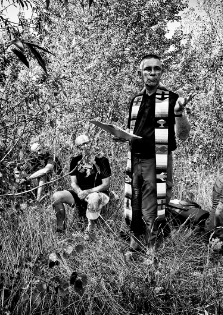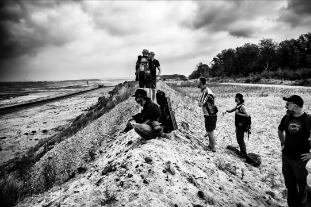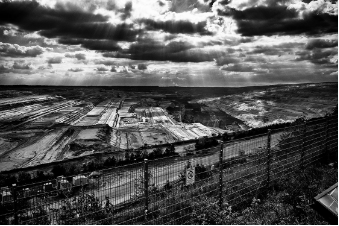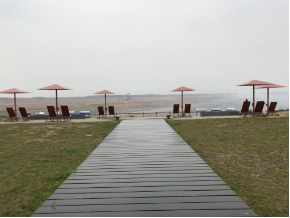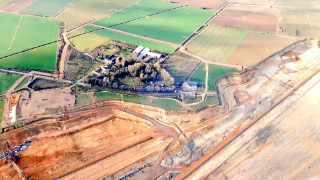Eco Pilgrimage in the Ahr Valley September 2023
A Report from Ulrike Great Trust Berlage
From 8 to 10 September, with eight people, we spent a weekend together in the Valley of the river Ahr in the German region called the Eifel. In July 2021 this valley was hit by massive flooding of the river Ahr, due to prolonged and intense rainfall. Where the Ahr normally is a small, peaceful river, meandering through a landscape of wide planes alternating with steep hills, it suddenly became a huge mass of water, in some places rising up to 7m above it’s normal level.
We wanted to see and hear what had happened in 2021 and experience how people, animals, the land and other beings are doing, two years later and at the same time there was the wish to see if healing could be done, otherwise than rebuilding houses or offering psychological help. The Ahr Valley was chosen because of concern about our changing climate; the idea being that the massive rain and flooding were a result of global warming and increasing unpredictable weather. Maybe no coincidence that because of this theme, the weekend we walked, brought exceptionally hot weather for the month of September with temperatures rising to a blistering 34 Celsius in the afternoon and causing us to pause and take a dip in the lovely cool water.
One group member who has family roots in this region, told us that in the second world war, the Ahr Valley had been used to train fighter pilots because of the steep hillsides along the river, causing many families to leave.
To the people we met on the road, we said we were on a pilgrimage, this word easily being understood, we noticed.
The first night we slept in the parish hall of the church in Schuld. The church sits high above the village, which during the flood had been completely shut off from the outside world, being divided into three islands due to the river becoming many times its normal size and overrunning bridges and roads. This was told to some of us by the lady who opened the building adjacent to the church for us. Her husband and son are local carpenters and lost all their machinery during the flood. Her story was still full of unresolved trauma and rage about people from the local community not being honest in the relief goods being delivered after the flood.
The first morning sit outside, in front of the church of Schuld, before breakfast, was beautiful; the sun rising from behind the mountain ridge across the valley and the fresh green carpet of grass and herbs that we sat upon.
There are many perspectives from which to look at the aftermath of the flood; my personal perspective being always to look at plants, especially the flowers. What I saw was the recovering of existing trees, shrubs, greens; perennial wildflowers like comfrey and malva. In the lower plains I saw pioneering flowers like poppies, wild amaranth, thornapple, evening primroses, various thistles. Among the butterflies only cabbage whites, but that isn’t any different from elsewhere in Western Europe this summer I guess. What we didn’t see, but what we were told by people living very close to the Ahr, were the big old trees that had been torn loose by the flood and were transported further on, damaging houses and bridges on their way. For this reason it isn’t allowed to plant new trees close to the river, but the people who told this, had planted new trees anyhow, saying the old chestnut tree in their garden was an essential part of their garden they didn’t want to miss.
Al along the bikers way we followed though the valley blackberry bushes were growing, giving us their ripe, sweet berries. One of the group members saw spiders everywhere; saying she’d never met so many spiders along the road in all her life. We saw a kingfisher and some big birds of prey circling high above. I wonder what stories nature, the rocks included, could have told us about their experience of the flood and I regret not being able to hear them speak.
To me one of the most powerful rituals we preformed along the road, was the naming out loud of the species that are going extinct or already have become extinct. They might be lost, but are still remembered this way. What would happen if humanity would focus its attention in this way to all living beings around?
All along the way there were damaged bridges, some being temporarily reconstructed so they could be used, some still in ruins making detours necessary. As we came closer to the village of Altenahr, the effect of the flood on buildings, roads and railways became increasingly visible. Things culminated in seeing how a railway bridge, under which previously cars and caravans had passed (the indication of the height of the vehicle still visible in paint on the bridge) had been lifted by the water, carried on some length and then had been smashed down so hard upon the ground, that the previous car openings were only about man high.
During the whole walk we passed several beautiful little whitewashed old chapels and churches, nearly all of them situated higher up the slopes of the valley, leaving them undamaged. Did people in earlier centuries know that from time to time the Ahr could rise and that therefore it was wise to build their most precious buildings so high, the rising river would never be able to reach them?
Walking into Altenahr by dusk where we intended to spend the night, we took a shortcut, using yet another damaged (and actually barred) bridge . In the village the annual “Weinfest” was going on with music and people walking the streets in their best clothes carrying a glass of white wine. If this gave us a slightly surrealistic feeling, this became even greater when we discovered we could walk straight into a previously flooded, and afterwards abandoned hotel. Exploring the empty building as a possible place to sleep was spooky; the ground floor being entirely empty, but on the second floor all the furniture was still in place in the hotel rooms covered under a layer of dust. One room was full of empty bottles as if someone was using as a hide-out sleeping place. We were saved by a man calling us back downstairs, telling us about the danger of collapse of the building and the three people who died there during the flood. After that encounter, finding a place to sleep that wouldn’t become too damp and cold during the night took some time, but we finally settled on a small sloping parking lot in an residential area behind the village church higher up. Although not sleeping very much, this turned out a magical night for some of us: the night sky full of bright stars, forever changing throughout the night; first the quietness, later in the night hearing two owls crying at each other (they sounded like Uhus) and in the early dawn a small bat flickering low above us (I must admit the bat intrigued me but also frightened me a bit). To my frustration I also saw airplanes in the morning sky flying over every two minutes – someone later said they were taking off from Frankfurt airport.
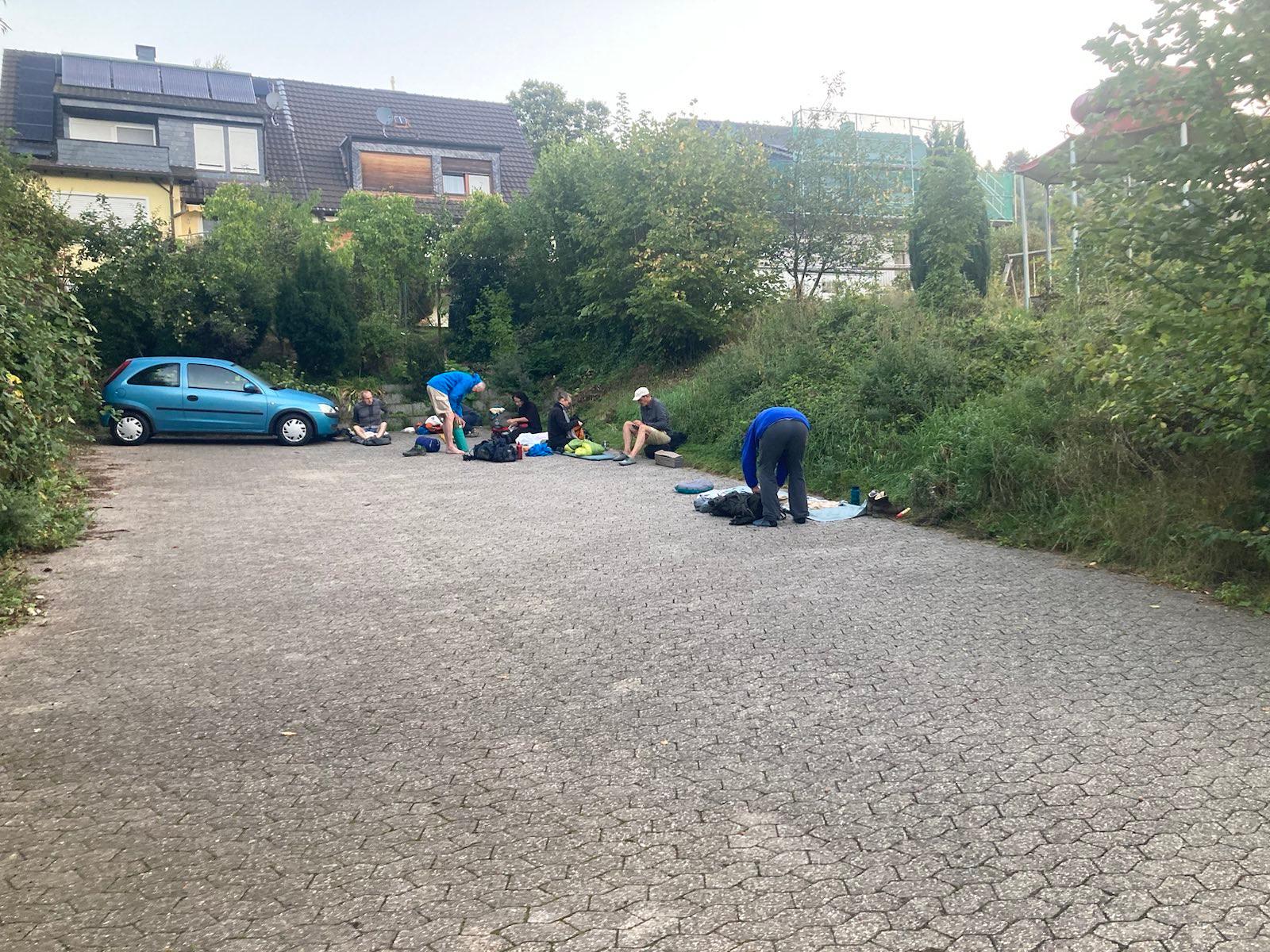
We left the parking lot shortly after sunrise and before the inhabitants of the houses around us started to wake up on Sunday morning. After a quick sanitary stop we sat down on an empty lot in front of a café being renovated with the sign “Saloon” on it. It was a dusty place, in the middle of town, windswept and swiftly changing from cold to very hot during the time we spent there. Meditating here, made the freshness of the morning for me suddenly change into gloom and despair. The place didn’t just feel sad; it felt devoid of any form of livelihood, very empty in a deeply unsettling way. At the same time after we’d finished breakfast on the same spot an Atlanta butterfly emerged out of nothing, fluttering around the damaged building. Later on that morning, behind a house being rebuilt and close to the Ahr, we did a ceremony to feed the hungry spirits. After that the gloom lifted a bit, but it felt as if there still needs a lot work to be done, to make the place truly alive again.
A friend of Svenja’s and member of the regional green party joined us in the final circle before leaving. Her presence was a bridge reaching from the world of pilgrimage on the road we had been in for nearly two days, to the everyday world of talking a taxi back to the car in Schuld and driving home to the Netherlands.
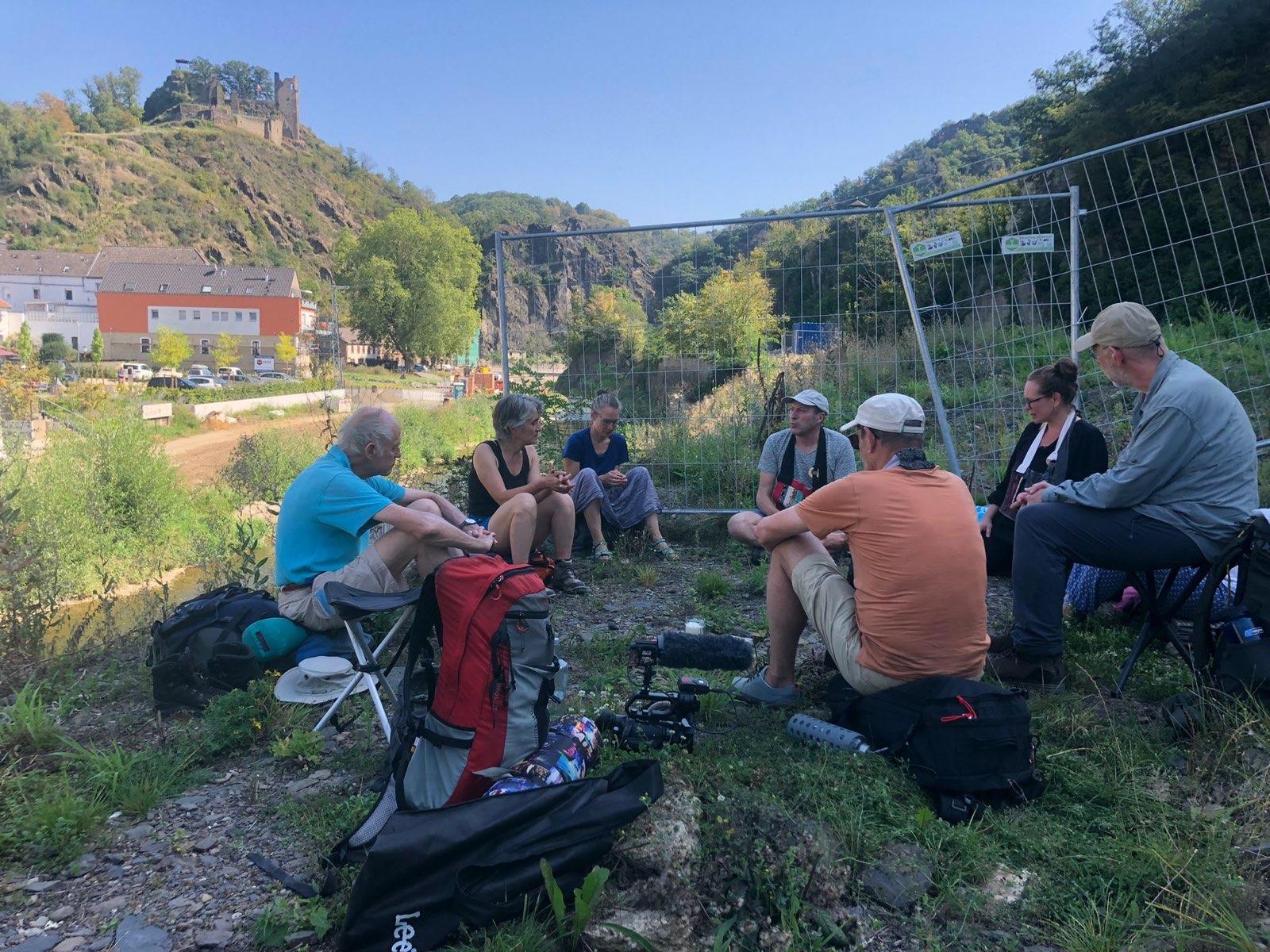
Although being familiar with sitting outside at home in my garden, the practice of sitting and sleeping outside in the middle of where things happen, was new to me and truly a deepening of practicing outside of a zendo or my own place. I’m curious about a possible next time.
As for the pilgrimage: a documentary film maker walked with us, almost unnoticed doing her filming work, so hopefully somewhere in the future it will be possible to watch some images of the weekend.
Gassho to Svenja, Dieter and Patrick for organizing the weekend!
Ulrike Great Trust Berlage
Fotos by Svenja Wildflower Hollweg
Eco Pilgrimage in the Ahr Valley by Ulrike Great Trust Berlage (2023) Read More »
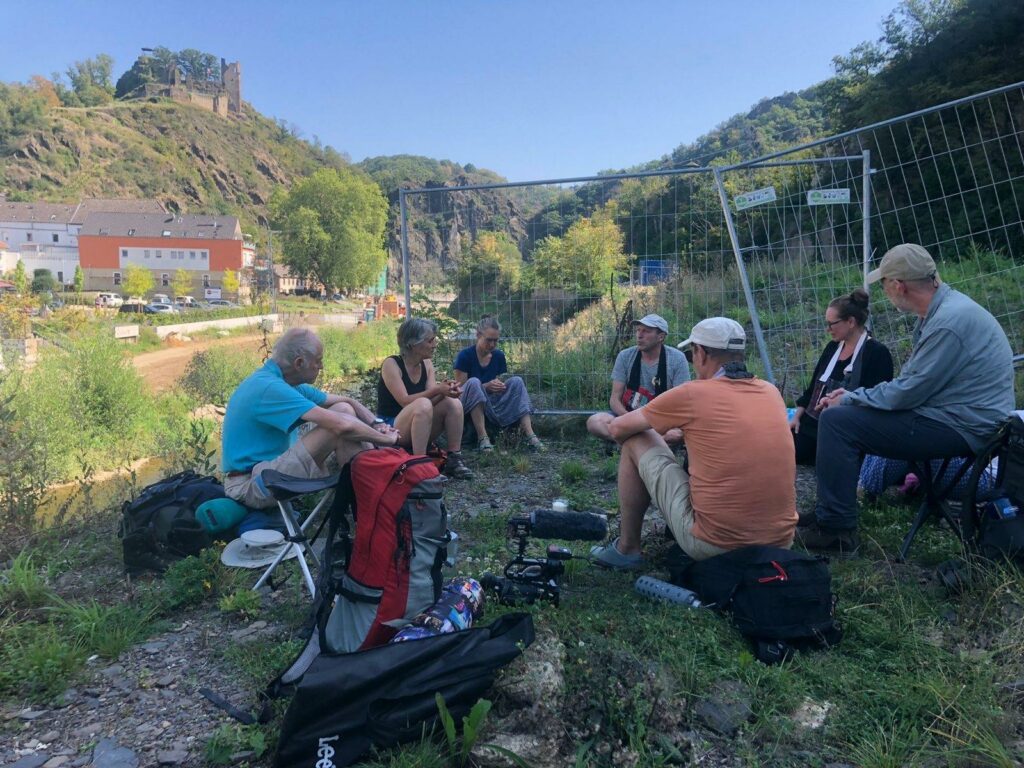
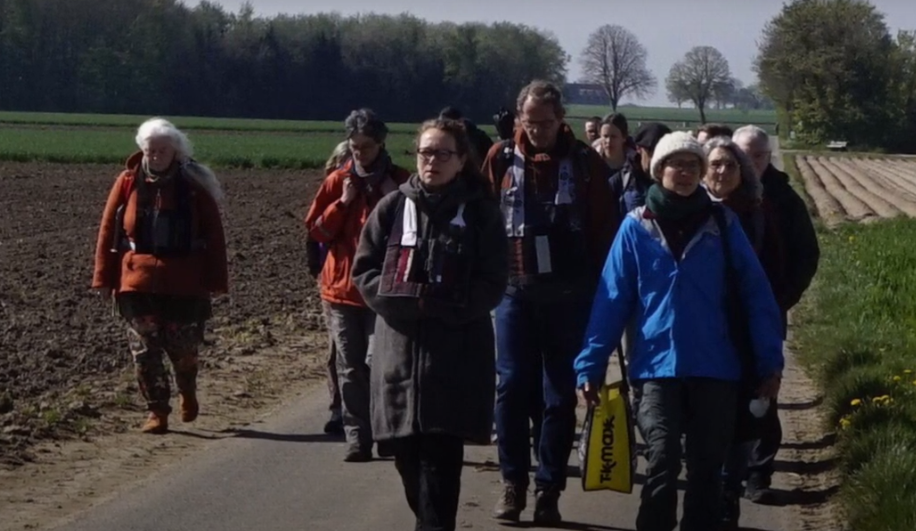

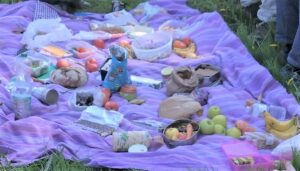
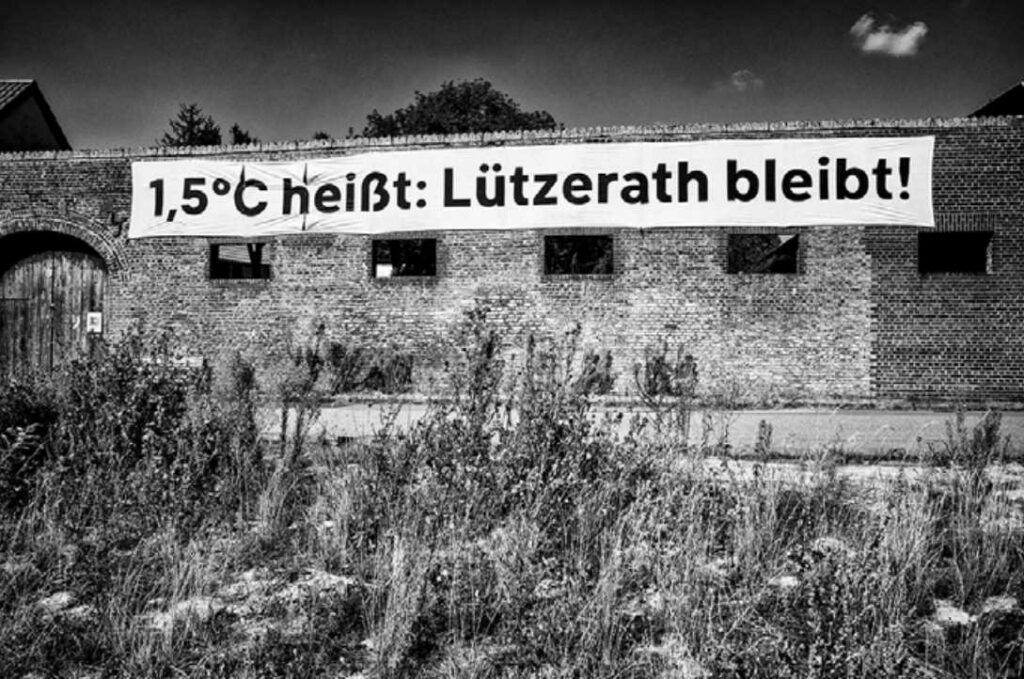


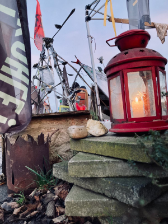
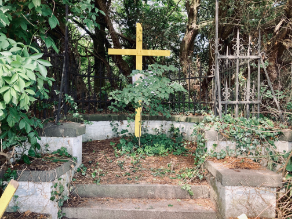
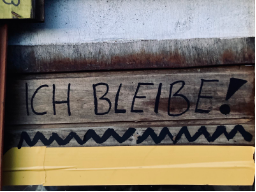
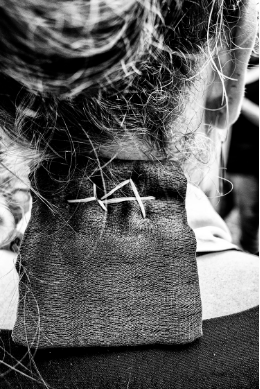

 I had not even mentioned that I was present with a broken foot, mostly in a wheelchair. So there I was, learning devotion, especially showing up as a visionary & organiser so vulnerable and in need of help, really challenged me and was put to the test especially on the climb to “Sophienhöhe”. With broken foot on broken, shredded ,injured (earth)body. 4 people (!) pulled and pushed me up the monotonous, graded path along small freshly planted trees. Remaining in the wheelchair on this path, I got a tiny taste of what enormous power and energy it takes to manage these gigantic earth movements, as they happened on and under this hill. A huge reshuffling of huge masses of earth – a reshuffling of the earth’s history that has grown in peace over thousands of years. Slowly matured by the growth and decay of organisms and life.
I had not even mentioned that I was present with a broken foot, mostly in a wheelchair. So there I was, learning devotion, especially showing up as a visionary & organiser so vulnerable and in need of help, really challenged me and was put to the test especially on the climb to “Sophienhöhe”. With broken foot on broken, shredded ,injured (earth)body. 4 people (!) pulled and pushed me up the monotonous, graded path along small freshly planted trees. Remaining in the wheelchair on this path, I got a tiny taste of what enormous power and energy it takes to manage these gigantic earth movements, as they happened on and under this hill. A huge reshuffling of huge masses of earth – a reshuffling of the earth’s history that has grown in peace over thousands of years. Slowly matured by the growth and decay of organisms and life.